Paris-headquartered 3D printing service bureau Sculpteo, together with the Forward AM division of parent company BASF will launch four new sustainable and bio-sourced 3D printing materials based on Nylon PA11.
Derived from renewable castor oil, the materials in the new range bridge the gap between performance and sustainability, possessing high chemical resistance, elongation, and durability properties. A member of the nylon family of polymers, Polyamide 11 (PA 11) is a bioplastic, created by the polymerization of the organic compound 11-aminoundecanoic acid.
The new materials, namely Ultrasint PA11, Ultrasint PA11 ESD, Ultrasint PA11 CF, and PA11 MJF, are now available in Sculpteo’s catalog.
Ultrasint PA11
The first of Sculpteo and BASF’s new materials are designed for use with Selective Laser Sintering (SLS) technology, exhibiting high ductility and impact strength for the production of durable parts able to withstand high mechanical loads. Based solely on renewable biomass sources, Ultrasint PA11 is engineered for the 3D printing of lightweight designs through reducing wall thickness, and also offers “interesting properties” for parts requiring contact with skin.
The material is designed with high impact resistance to make it suitable for applications within the automotive sector, such as car interior components, in addition to being ideal for the manufacture of living hinges.
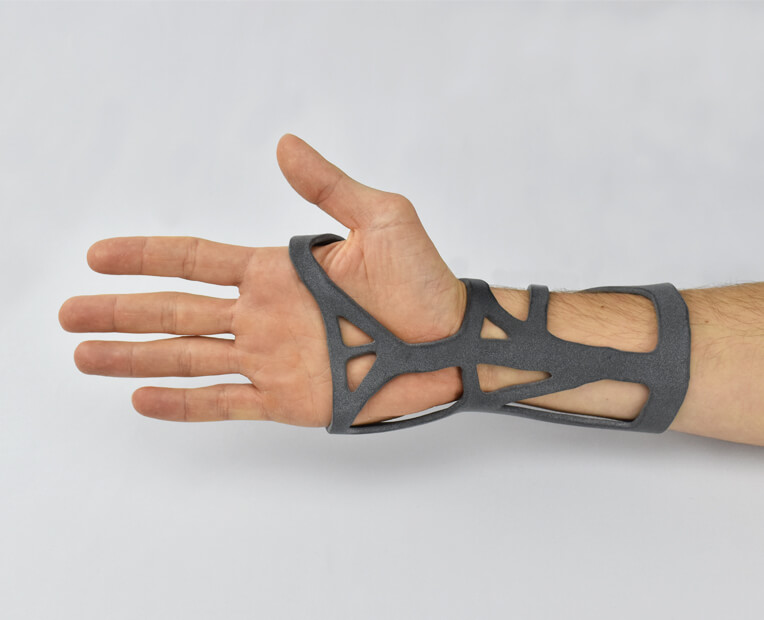
Ultrasint PA11 ESD
Offering new possibilities within the electronics sector, in particular, Ultrasint PA11 ESD is a bio-based powder material with electrostatic discharging properties, which refers to the sudden flow of electricity between two electrically charged objects caused by contact. The material is designed to increase the safety process within advanced applications where electrostatic discharging may occur.
Equipped with mechanical and thermal characteristics, the material can be used for the production of electronic housings, jigs, and fixtures for electronics and tooling applications.
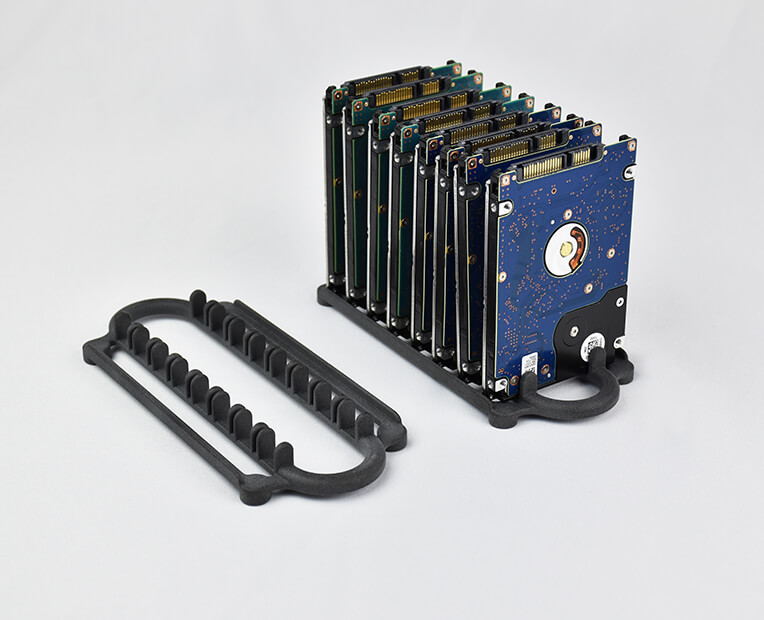
Ultrasint PA11 CF
Claimed to be one of the strongest materials currently available across the 3D printing sector, Ultrasint PA11 CF (Carbon Fiber) combines high ductility and impact performance with high rigidity.
The carbon-fiber-reinforced material enables the printing of lightweight designs through reducing wall thickness and is engineered to provide advanced mechanical performance for parts where both strength and rigidity are required.
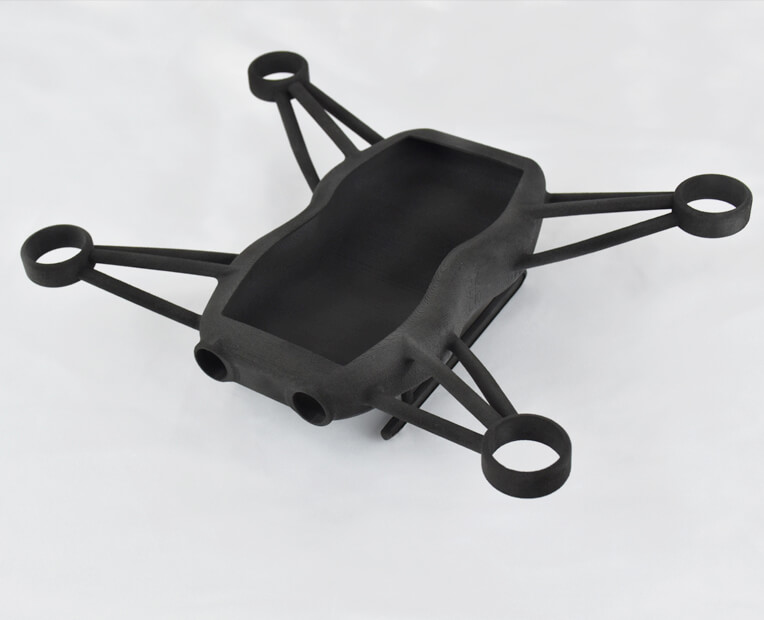
PA11 for MJF
The fourth material made available by Sculpteo and BASF differs from the other three in the range as it uses Multi-Jet Fusion (MJF) technology. MJF uses a liquid binding agent to create the layers of an object before a detailing agent is employed to create fine details and smooth the object’s surface.
The PA11 material is suitable for use in medical, impact resistance, and living hinge applications, among others.
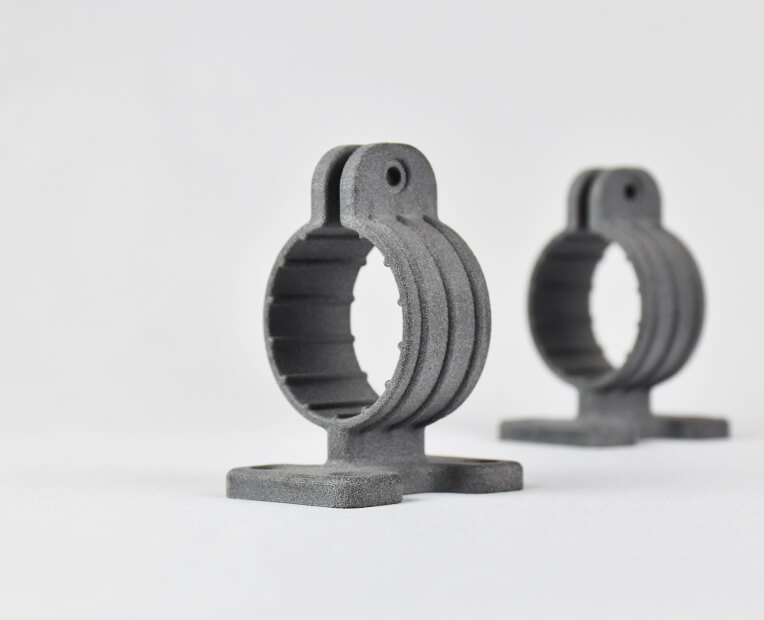
BASF’s acquisition of Sculpteo
Founded in 2009, Sculpteo operated as an independent online platform providing 3D printing services until November 2019, when the firm was acquired by BASF to help its 3D printing division market and produce new 3D printing materials at a faster pace. Since then, BASF has sought to develop Sculpteo’s 3D printing platform into a global network.
In July this year, the firms launched a new collection of high-performance 3D printing materials specifically designed for the automotive industry. Engineered with strength, heat resistance, and flexibility in mind, each of the materials was designed with properties that specifically target production constraints within the sector.
Initially founded in 2017 as BASF 3D Printing Solutions, BASF’s subsidiary Forward AM, focuses on establishing and expanding BASF’s 3D printing business, which develops and provides a wide range of 3D printing filaments, resins, and powders.
To this end, BASF has executed several other acquisitions in addition to that of Sculpteo. The company acquired Netherlands-based filament maker Innofil3D in August 2017, which produces PLA, PET, ABS, and InnoCircle materials for use with FDM and FFF 3D printers. Shortly after, BASF integrated European 3D printing materials companies Advanc3D Materials and Setup Performance into its portfolio of materials companies.
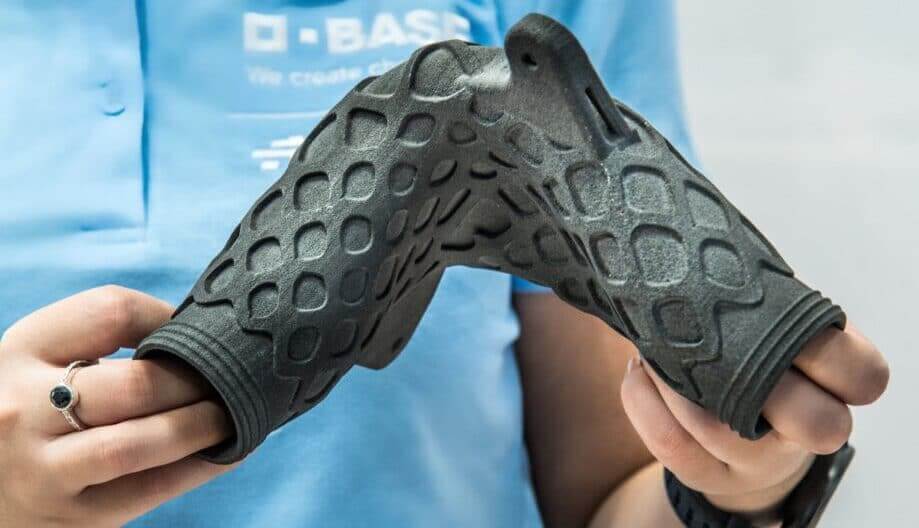
Subscribe to the 3D Printing Industry newsletter for the latest news in additive manufacturing. You can also stay connected by following us on Twitter and liking us on Facebook.
Be sure to subscribe to the Another Dimension podcast on your chosen podcast player to make sure you never miss an episode.
Looking for a career in additive manufacturing? Visit 3D Printing Jobs for a selection of roles in the industry.
Featured image shows Ultrasint PA11 is a bio-derived powder with exceptionally high toughness. Image via Sculpteo.


